Fall Prevention and Application of Exercise Intervention
VerifiedAdded on 2023/03/20
|13
|1633
|53
Presentation
AI Summary
This presentation focuses on fall prevention strategies for older adults, emphasizing the application of exercise as an intervention. It begins by highlighting the significance of falls as a major cause of injuries and fatalities among the elderly, citing statistics from the Centers for Disease Control and Prevention and the World Health Organization. The presentation establishes the objective of developing a PICOT question regarding psychotherapeutic interventions to prevent falls, emphasizing the importance of a systematic literature review and an analysis of New Zealand's health policies. The PICOT question explores whether exercise and balance-related interventions improve body balance and stability in elderly patients with chronic diseases. The presentation then reviews the literature, discussing how conditions like Parkinson's disease and rheumatoid arthritis increase fall risks, and how exercise programs like the Otago exercise program and Tai Chi can effectively reduce these risks. It also highlights the effectiveness of exercise compared to vitamin D supplementation and its cost-effectiveness. Furthermore, the presentation examines local and national healthcare policies in New Zealand that support exercise as a primary intervention. Various types of interventions, including balance training and physiotherapy, are discussed, with evidence from studies conducted in New Zealand. The presentation concludes by emphasizing the importance of setting goals and interventions to prevent falls, highlighting the effectiveness of the interventions found in the literature review, and suggesting that support from healthcare professionals is crucial for reducing fall risks.
1 out of 13
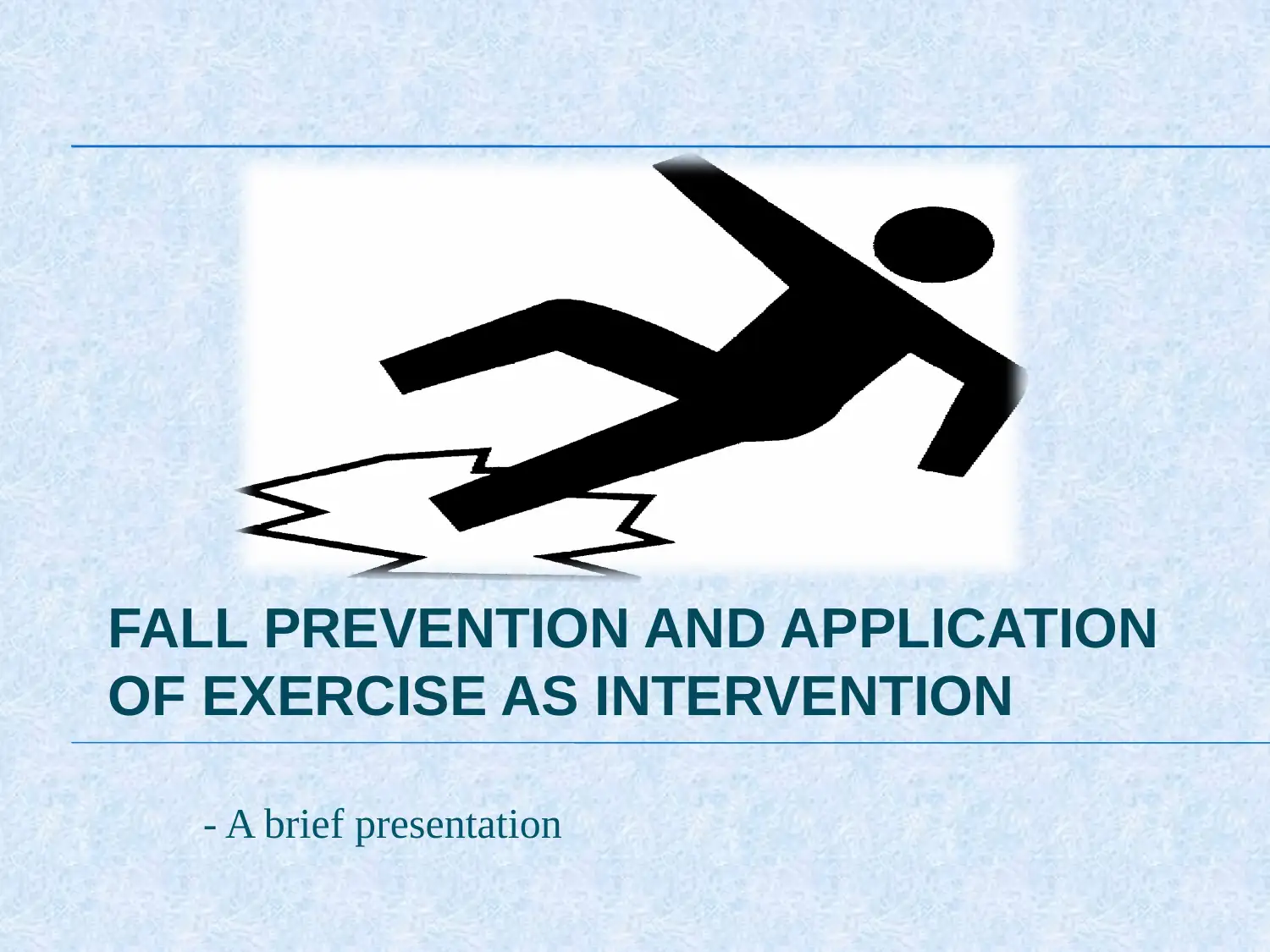
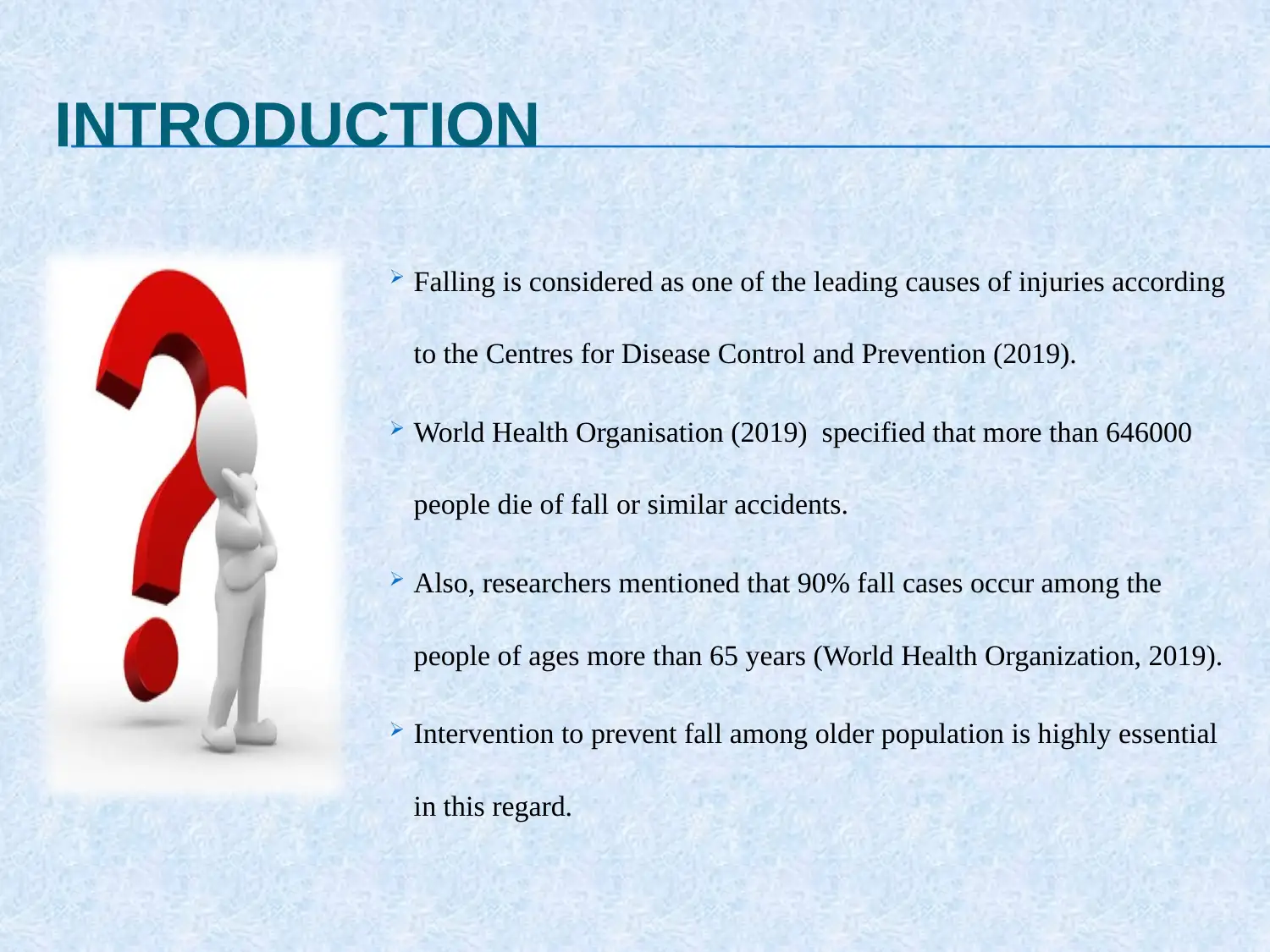
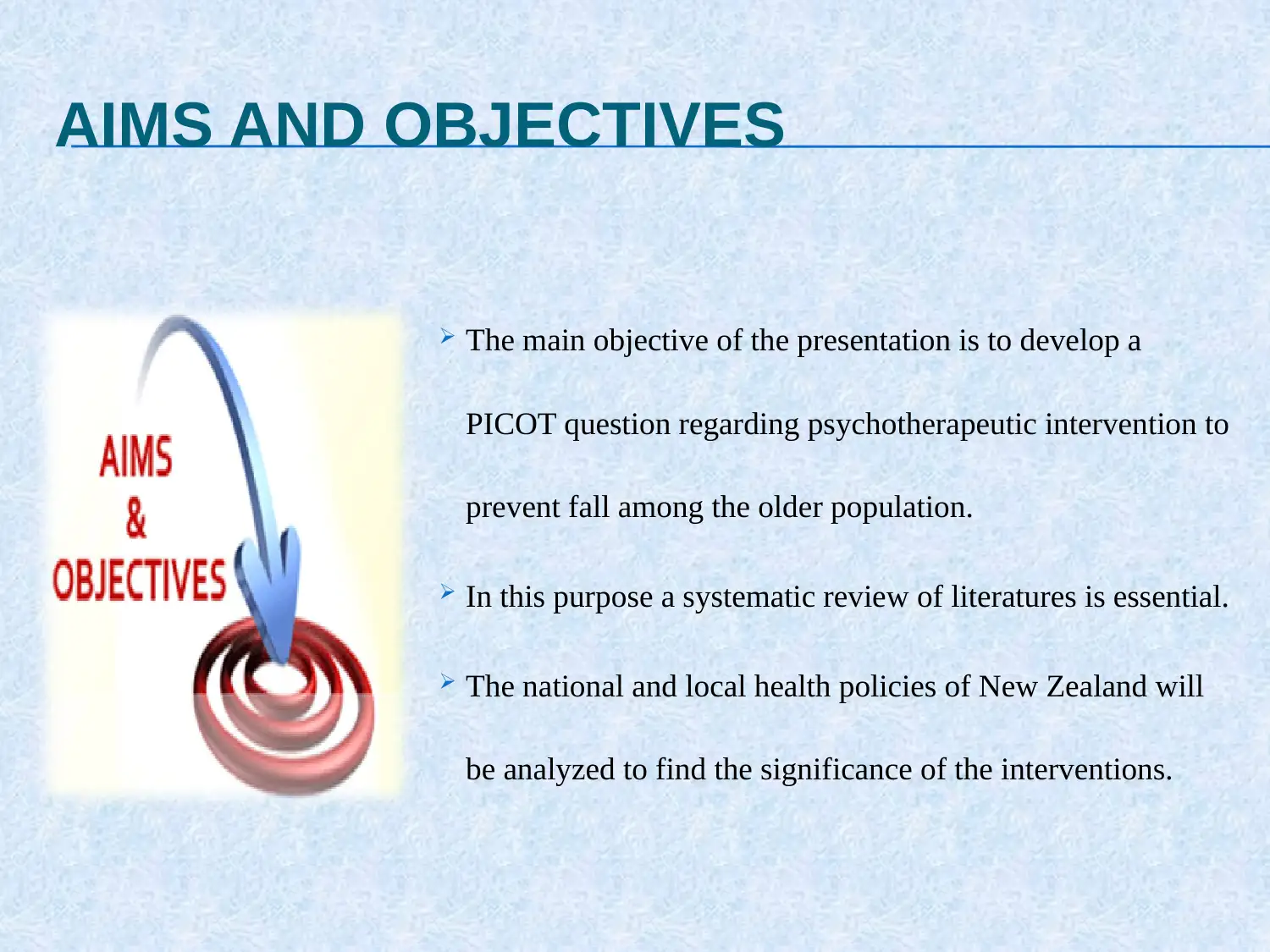

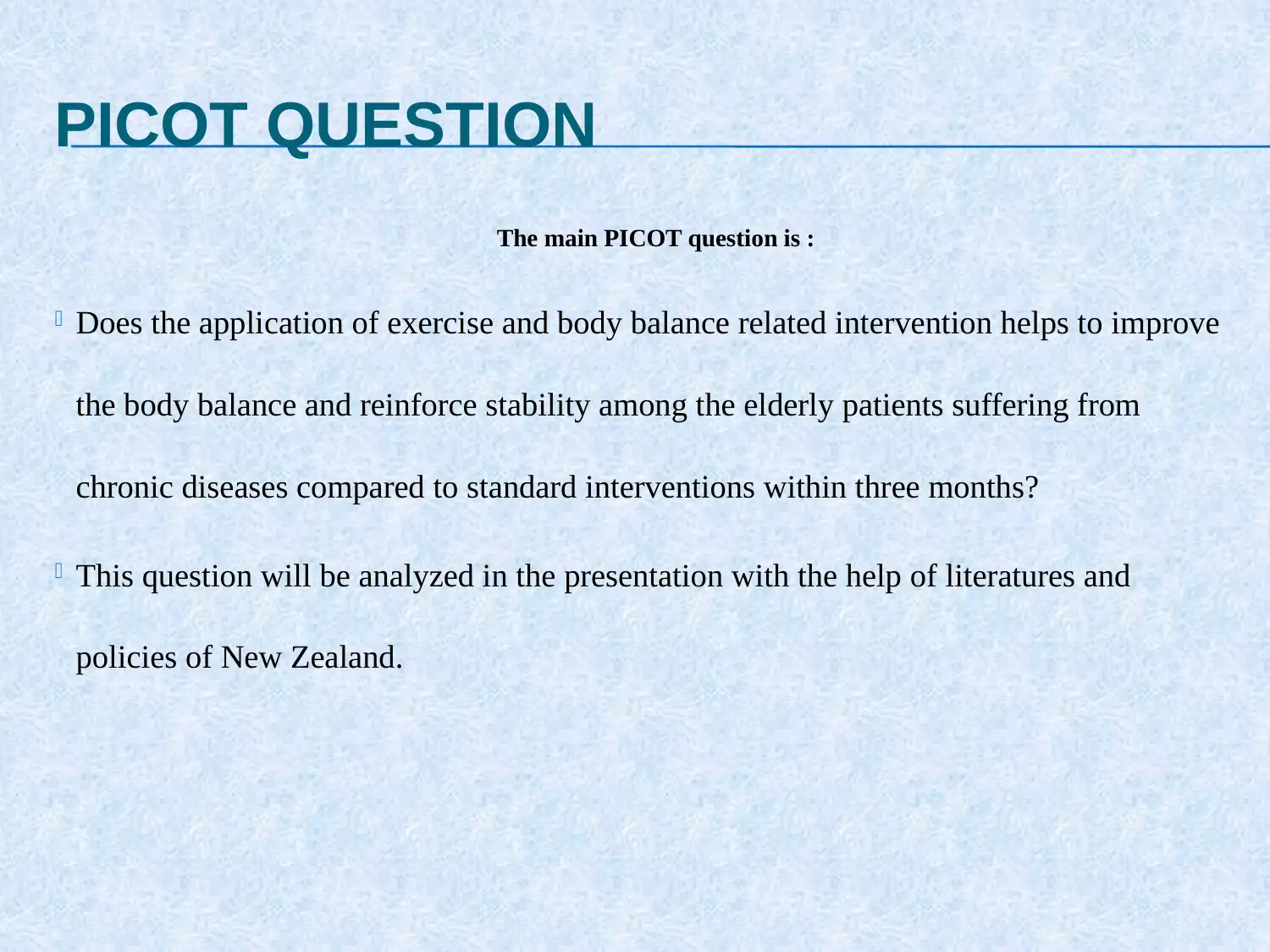
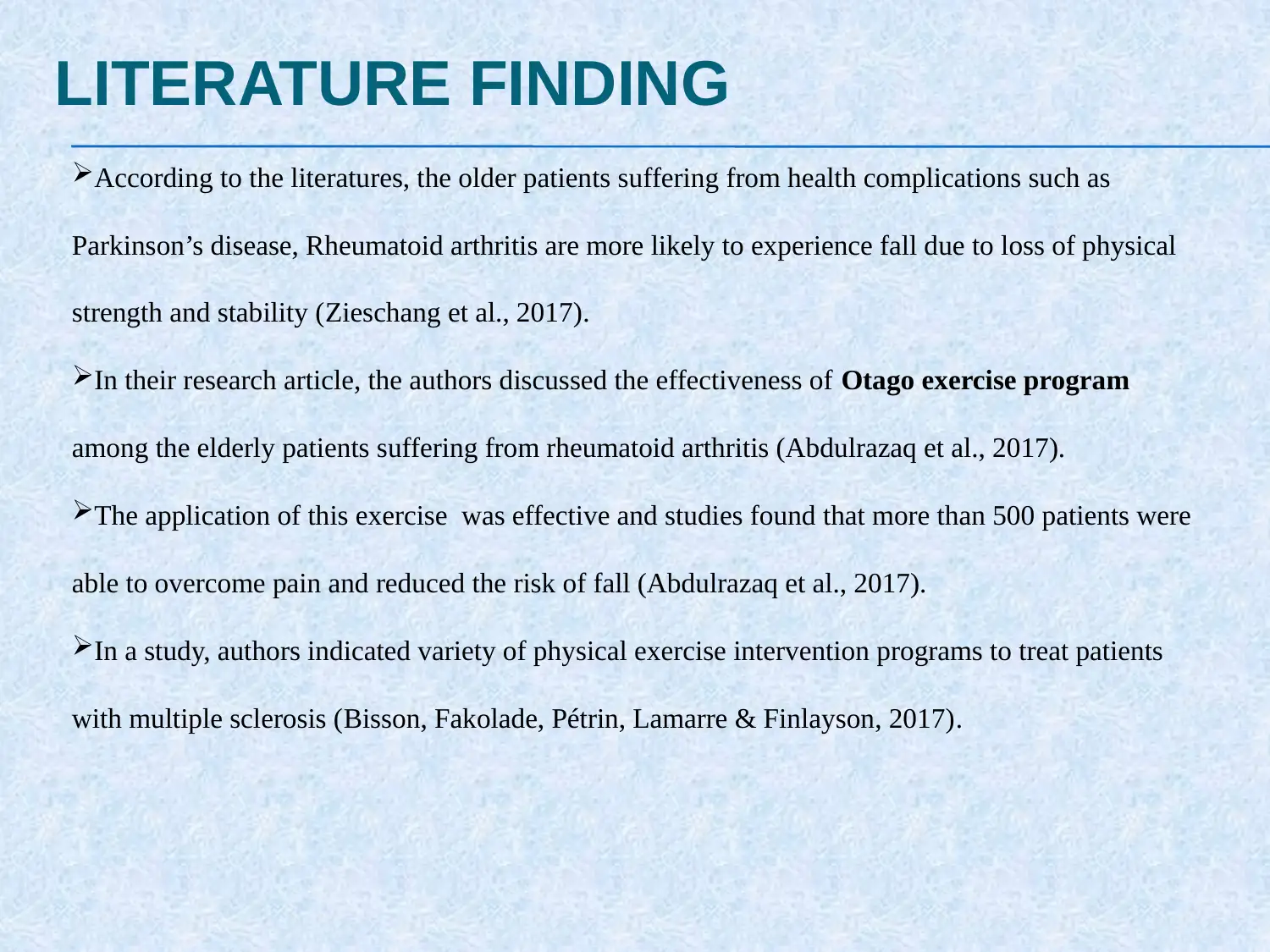
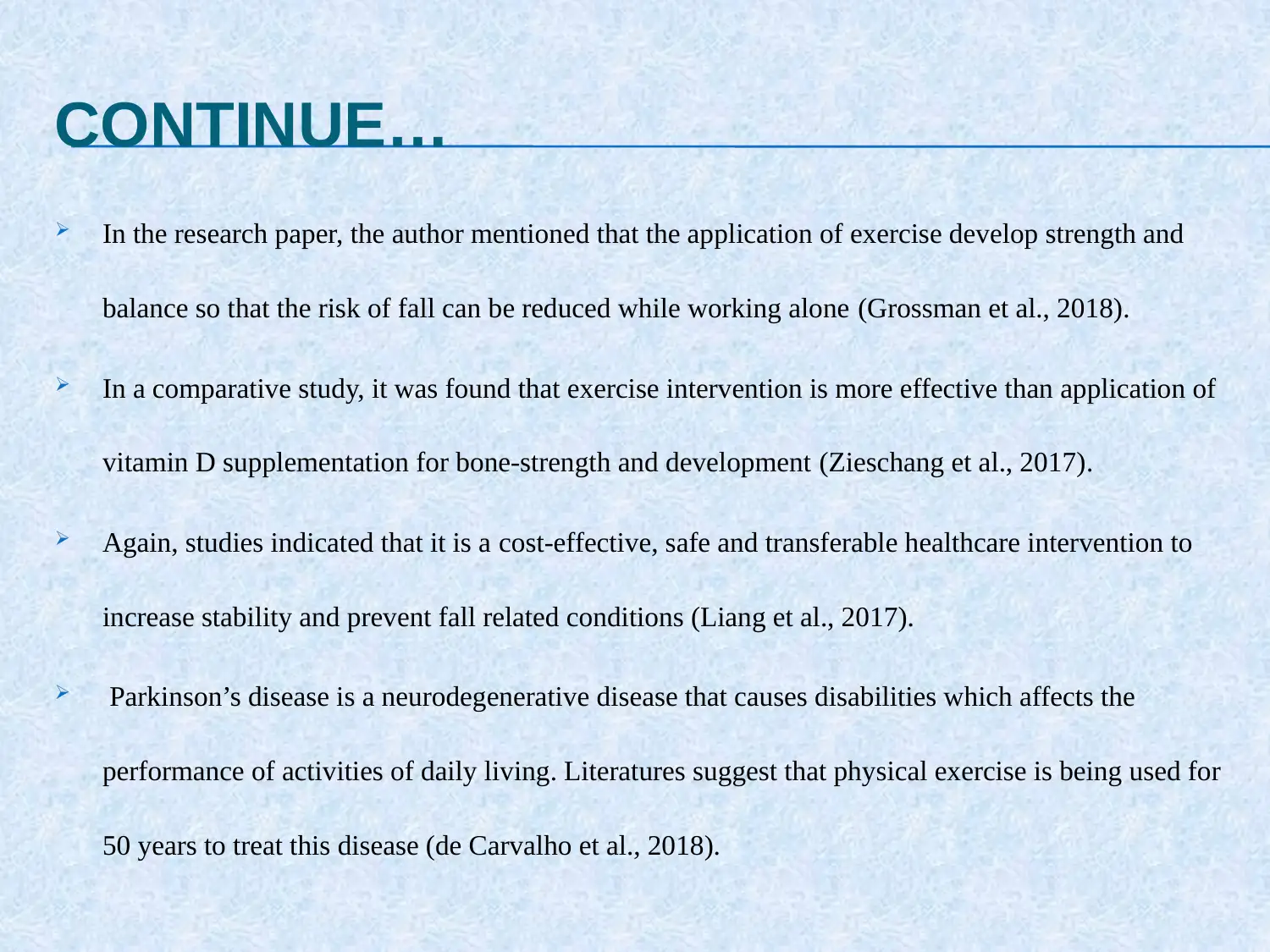
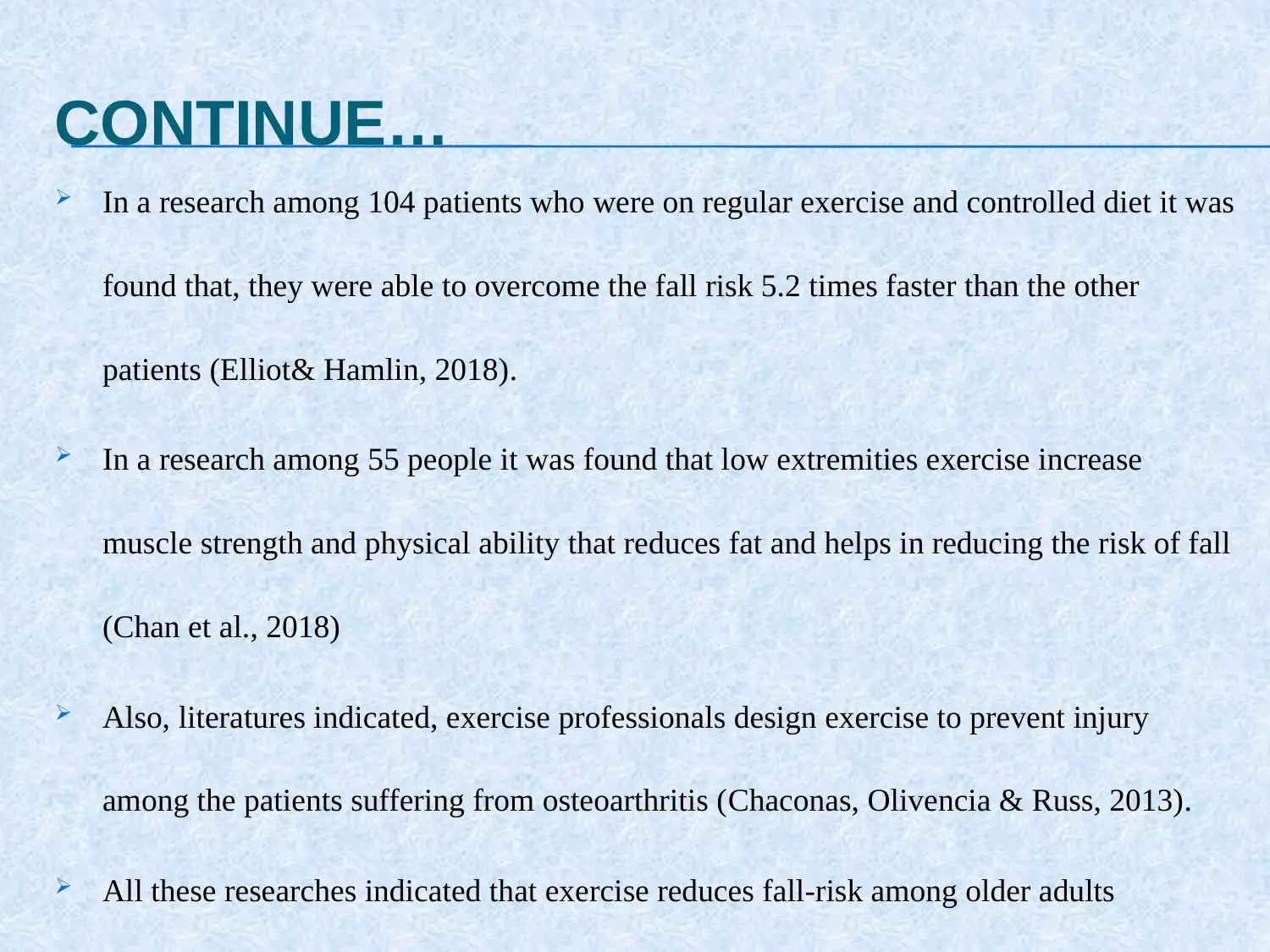
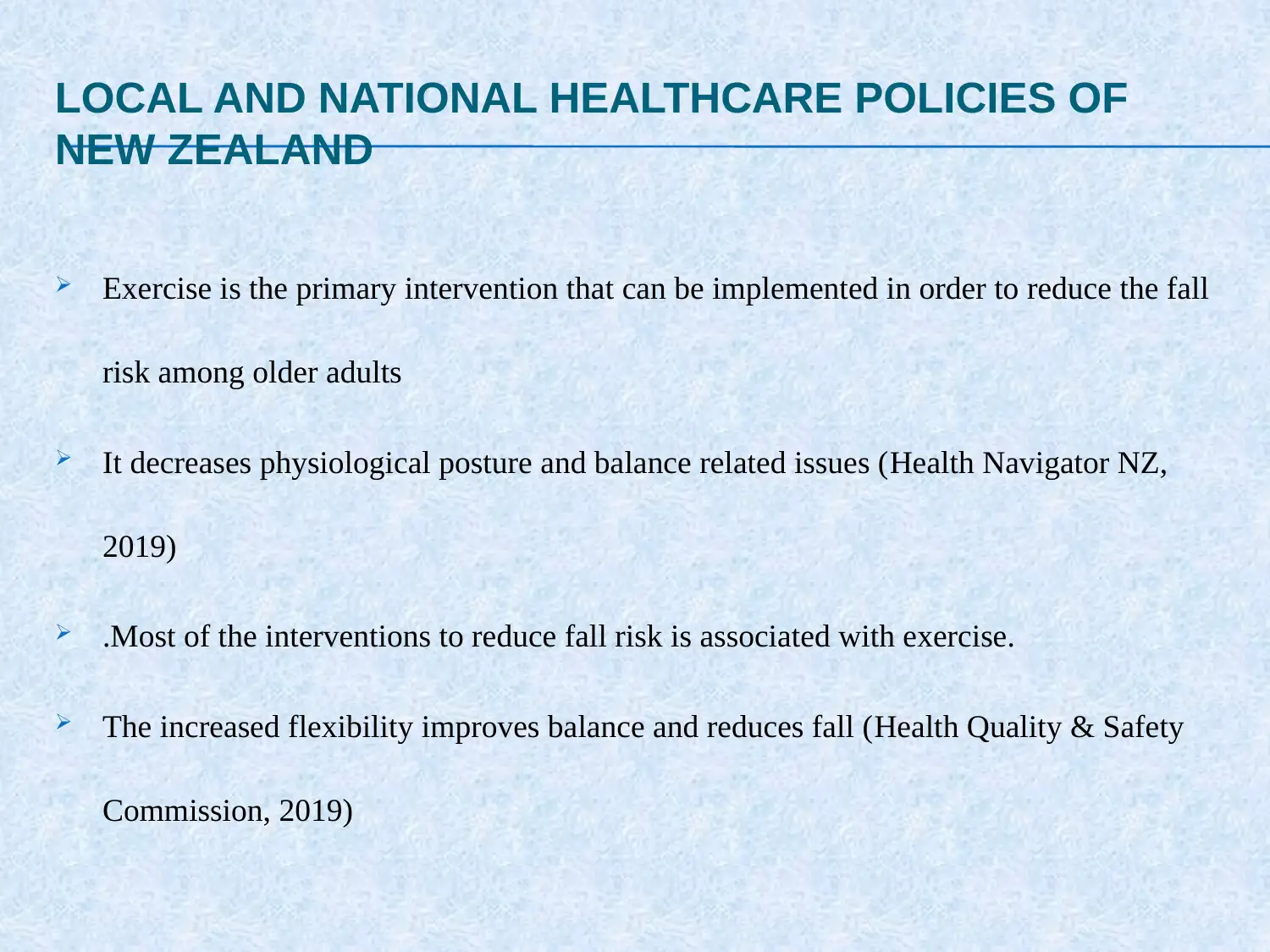
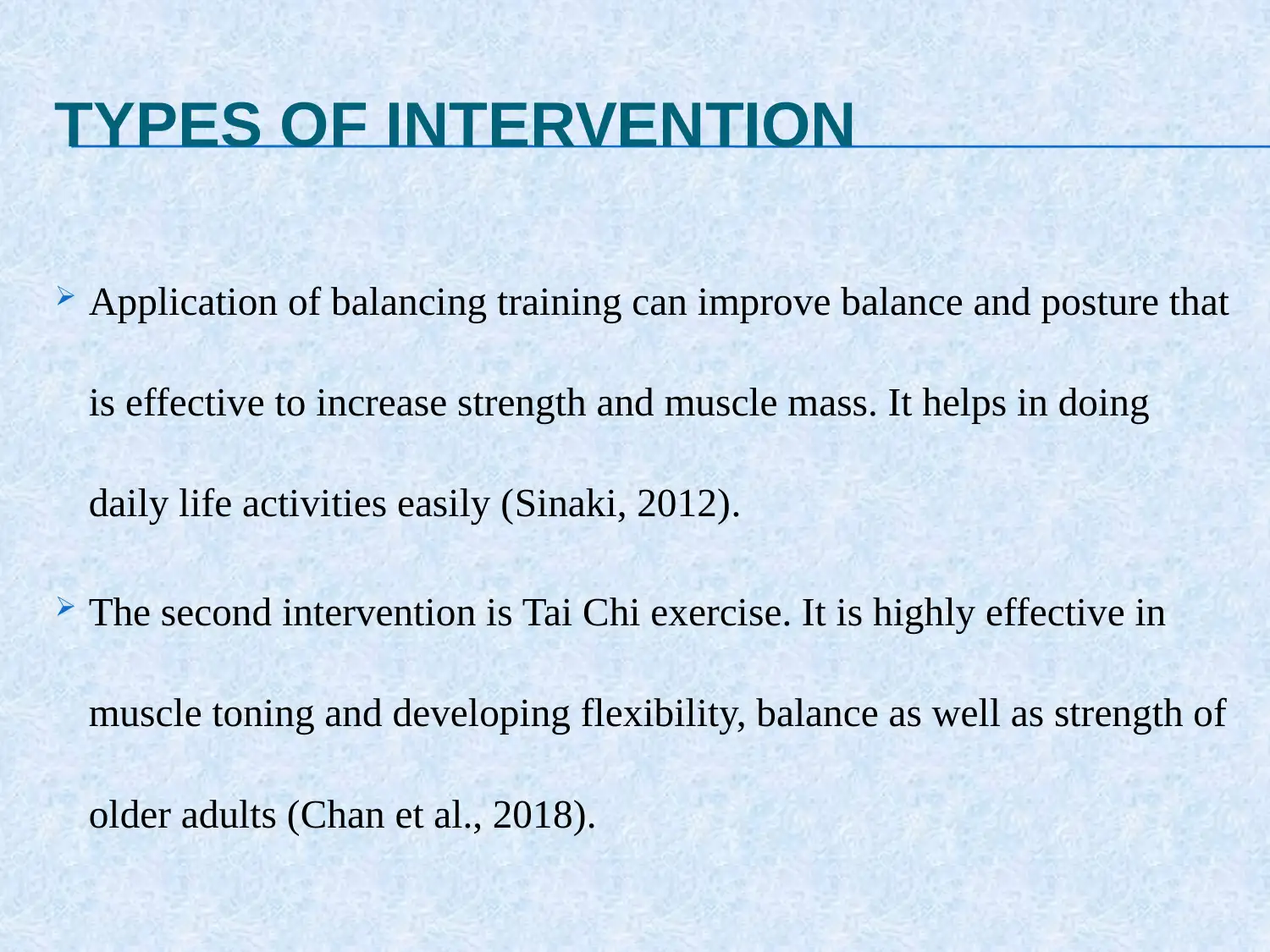
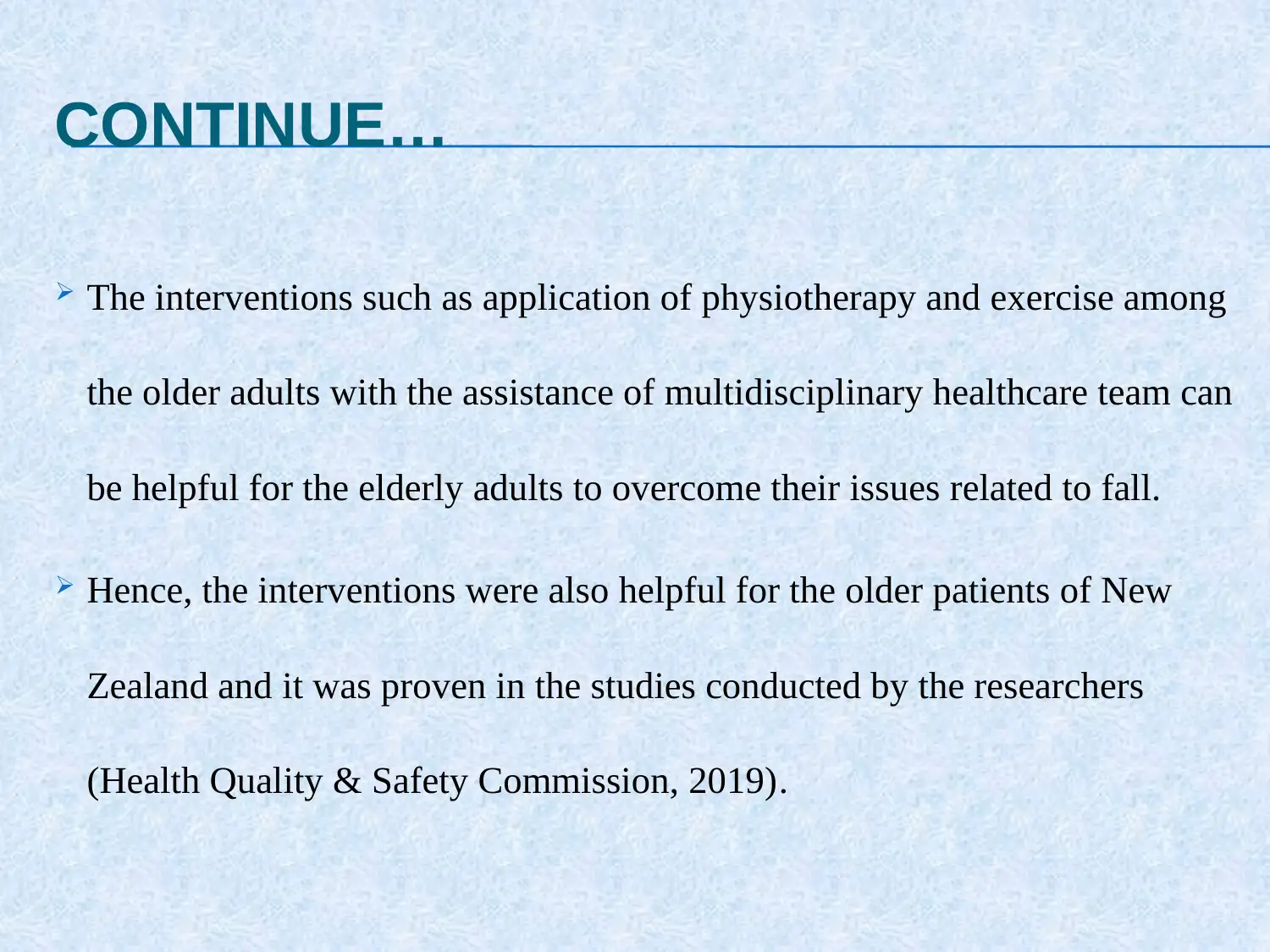
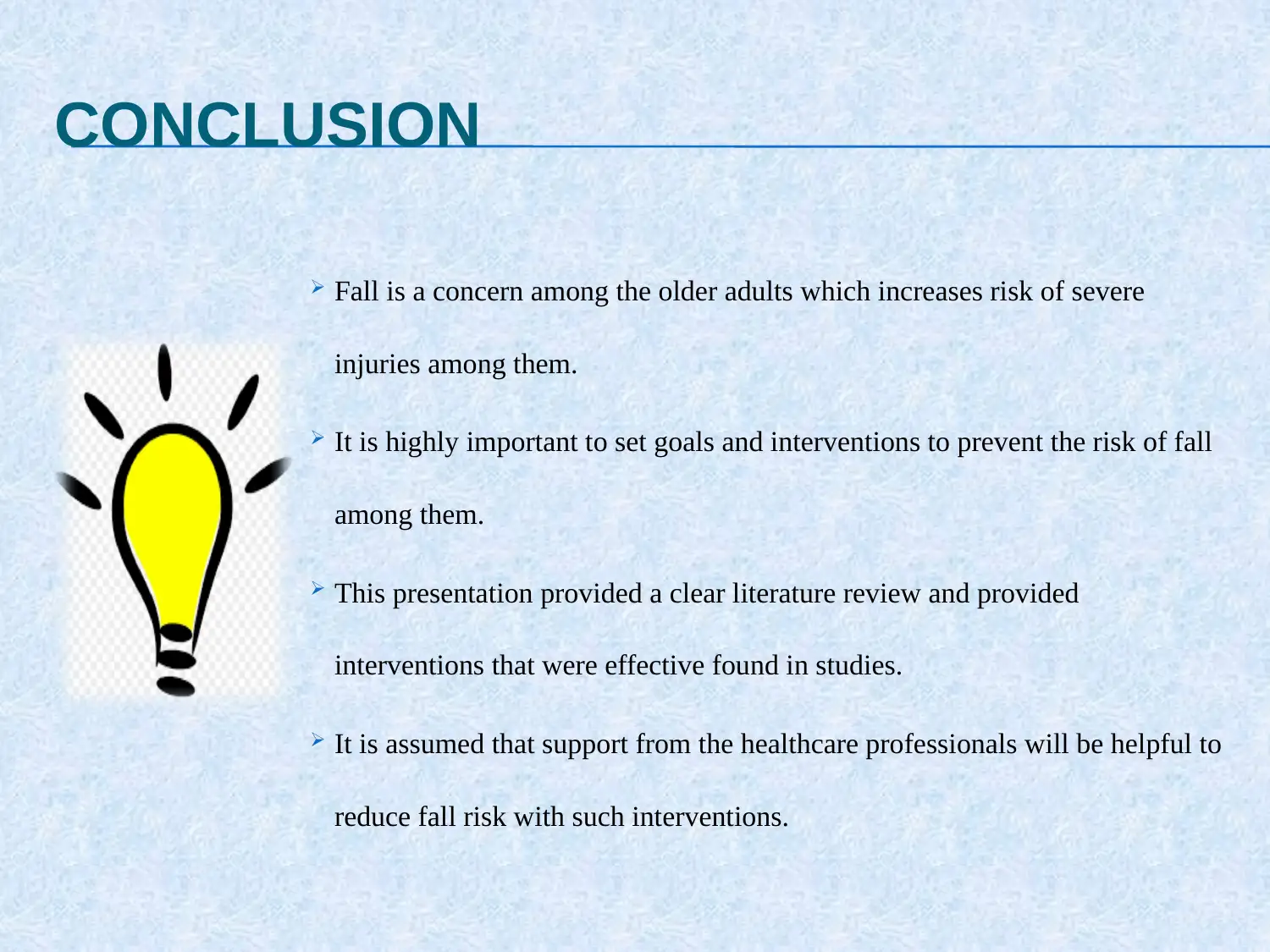
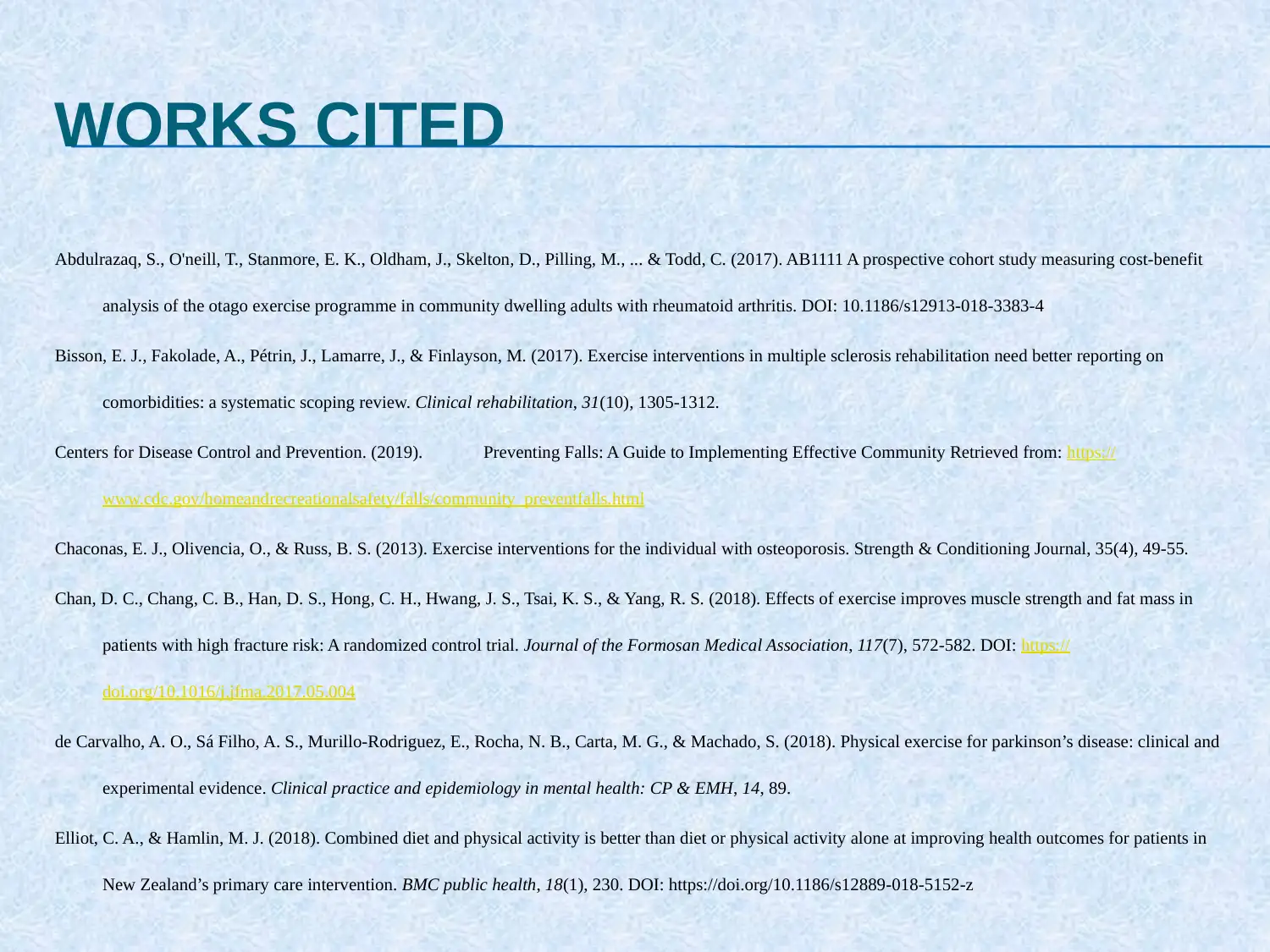






![[object Object]](/_next/static/media/star-bottom.7253800d.svg)